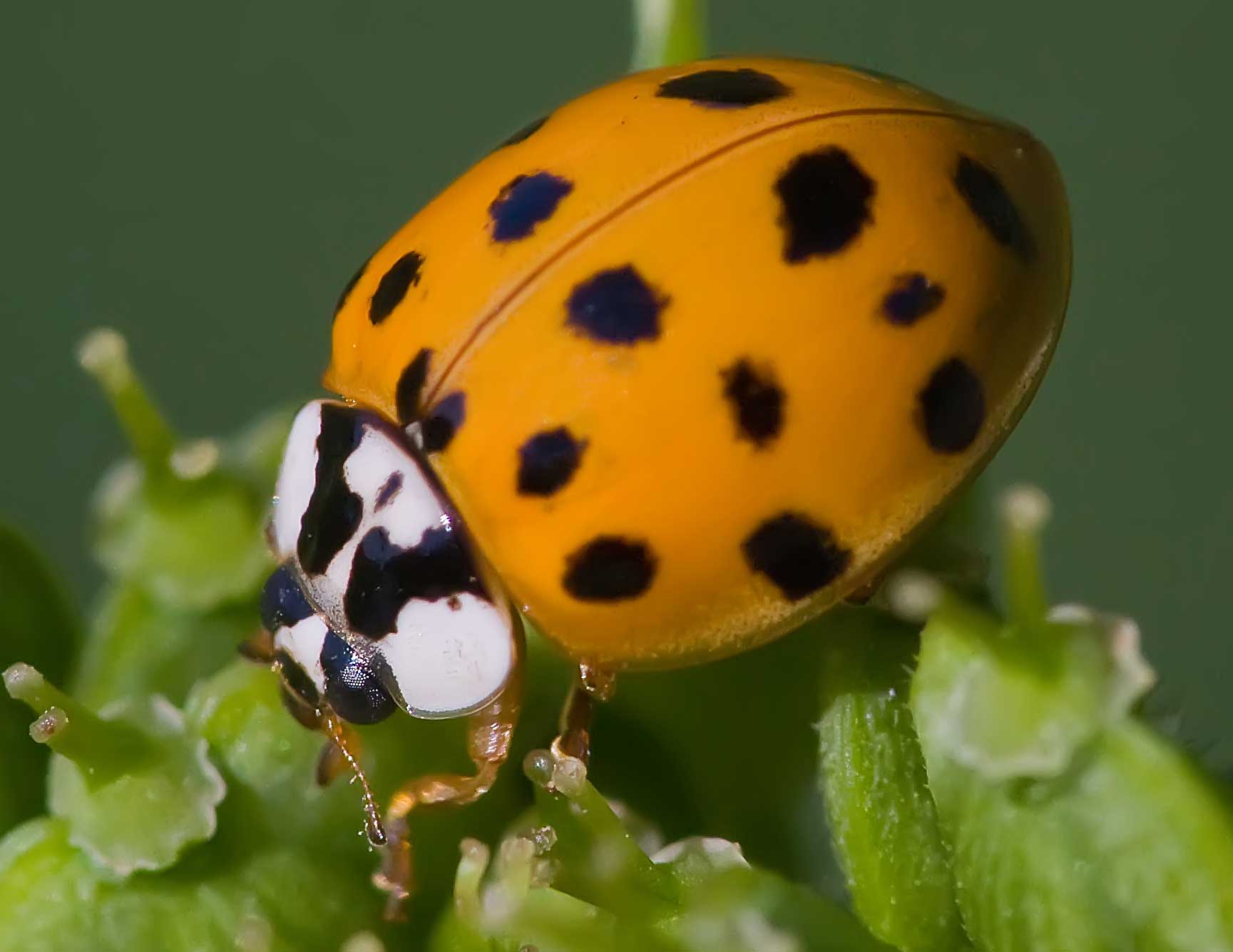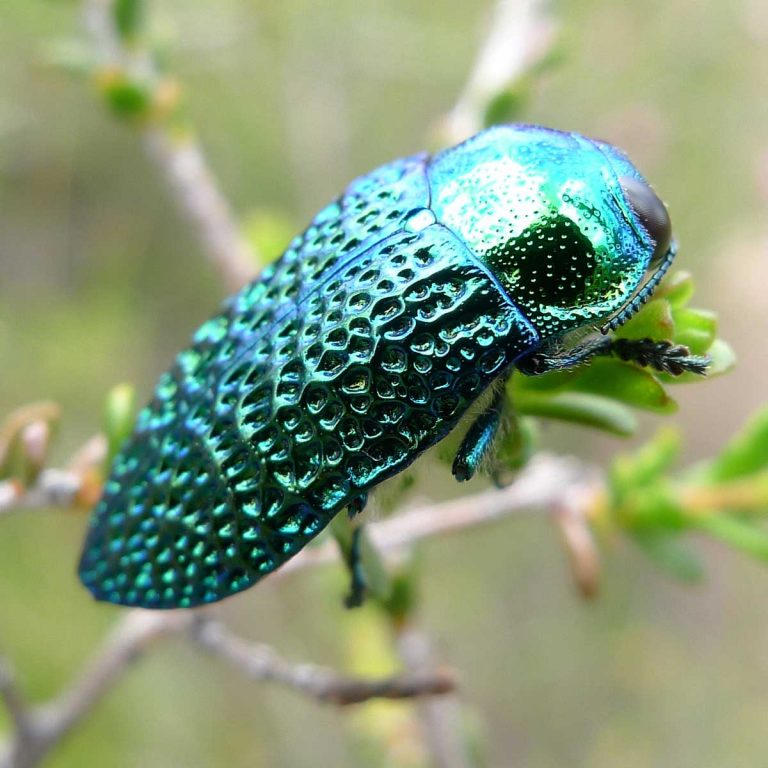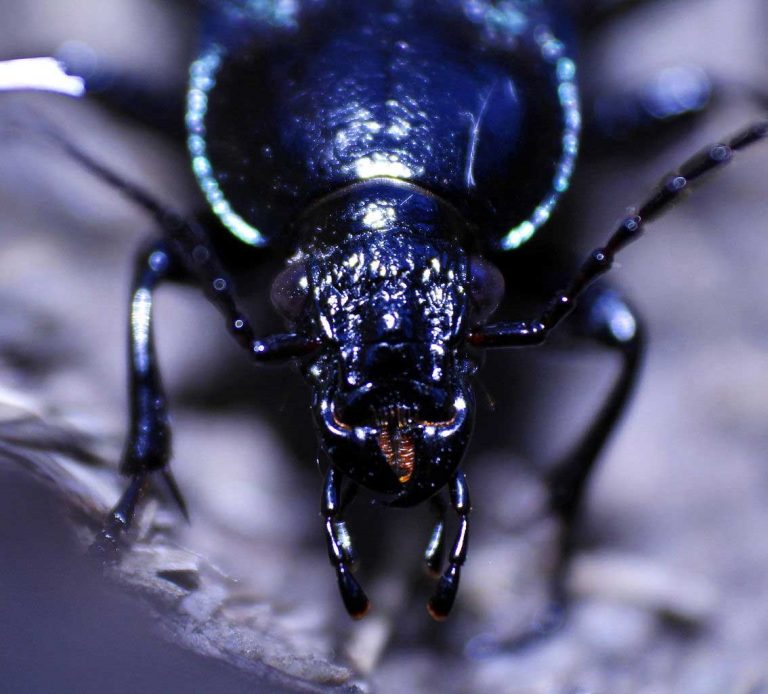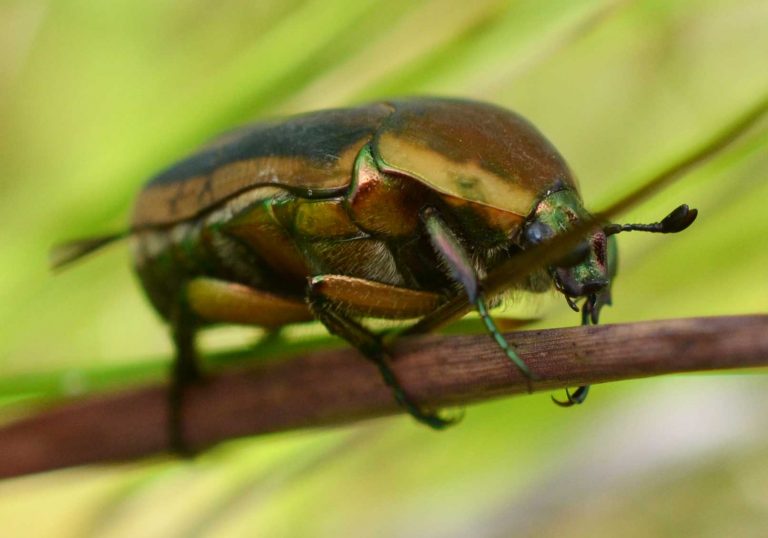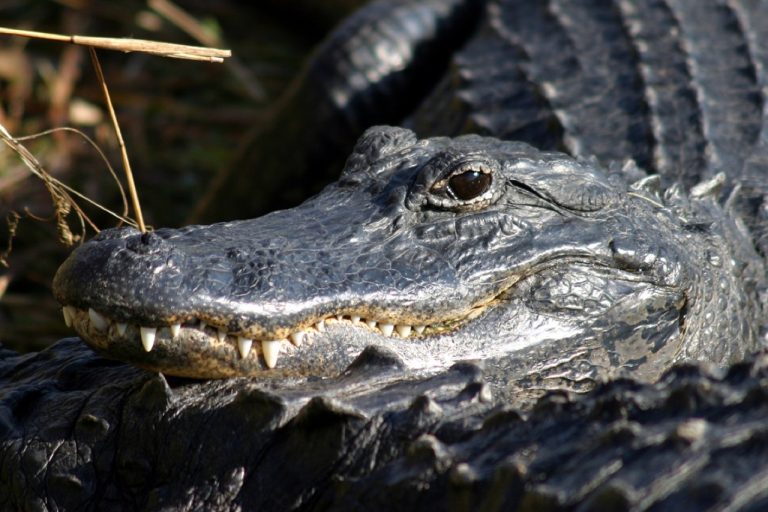Orange Ladybug – The Asian Lady Beetle
Harmonia axyridis, commonly known as the orange ladybug or the Asian lady beetle is actually seen in a variety of colors throughout Iowa and the areas of the United States. This species is popular for its irritating habit of piling up near the building sides and invading indoors during the harsh climate like in the fall. These lady beetles are considered beneficial insects in agricultural fields and for some types of trees, but at the same time, can turn into a nuisance by invading houses in bad weather. Mainly, wooden industrial areas or residential buildings are more prone to attacks by this insect.
The emergence of this Asian lady beetle is still not clear, but it is believed that this pest species was mistakenly introduced in the areas of the United States. Species of beetles that reached the different parts of New Orleans at the end of 1980s have flown or crawled away by themselves to the other corners of the nation. They are well-known eaters of aphids, hence the larval as well as the adult form is introduced in the places, having problem of high aphid population. Hence, this species is sometimes considered as a beneficial insect.
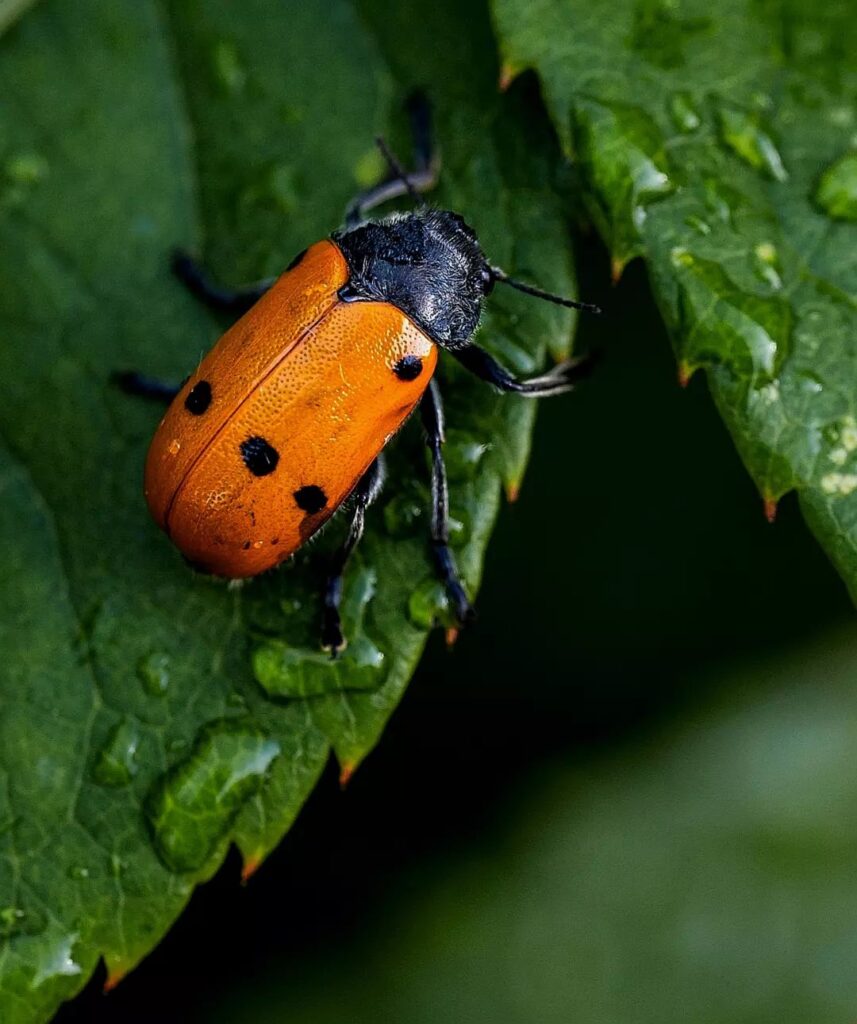
Description
Many of these multicolored beetles grow up to 1/3rd of an inch, and have orange bodies with black spots on it. Deep orange colored body is the most commonly found species. There are around 19 black spots, but most of them are missing or faint. This beetle also has a unique “w” shaped black mark on its thorax.
Orange Ladybug Behavior
Asian lady beetles, similar to the other invading species are basically outdoor insects that try to wander inside the house during a short period of their life. This species do not reproduce or feed inside the house, neither does it destroys any house structure, fabrics or furniture. It is not harmful, as it does not sting. Neither does it spread any diseases. Female beetles do not bite, but occasionally it pinches the human skin, when exposed. This lady beetle leaves a frustrating odor, as well as a slimy smear, when smashed or squashed.
This beetle is known for their instinctive behavior of flying to some sunny and exposed location, while getting ready to hibernate in the winter season. The migration period of this beetle varies, but usually they fly during the month between mid-September and October. Light colored walls and building in bright sun mostly attracts these beetles.
Management
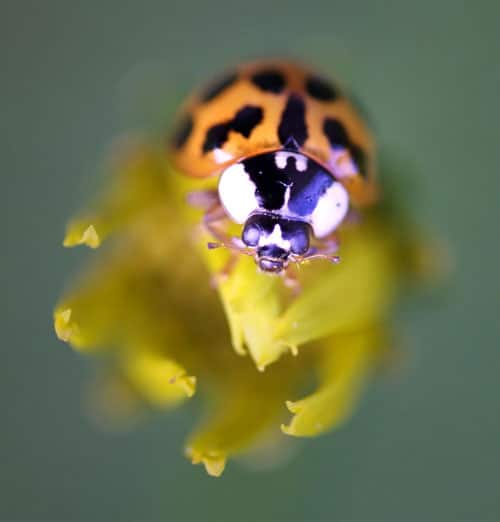
The only way to control the invasion of the orange ladybug is by preventing them from entering your house. Seal all the exterior cracks and gaps around the doors, windows, roofs, eaves, slides and other openings on the exterior part of your house. Studies reveal that no pest control is 100% effective. For heavy infestation that consists of intolerable amount of beetles, using pyrethroid insecticide like esfenvalerate or permethrin, outside the premise of the building can be effective. Except the pyrethroid insecticides, no other insecticides have been successful in prevention of these beetles till now.
You can get long-term relief by planting some trees and plants near the house that can provide shade to the west and south side of the house. The practical method is to vacuum regularly and sweep away these beetles and discard them. Light traps for indoor use are also available, which can be more beneficial than the sprays and other insecticides.
Why Do Ladybugs Have Orange Color?
Even though the orange ladybugs are a specific type of ladybug, the squash and cucumber beetles can be orange in color too. All animals adapt and change gradually over long time periods. Therefore, these little insects also diversify and modify according to the environment and many external factors.
The coloration goes down to the DNA. The orange color can be the effect of diversification from the traditional red ladybugs. Another reason for orange and bright coloration is to defend themselves against predators.
Halyzia Sedecimguttata
Halyzia sedecimguttata, also known as the orange ladybird, is one of the most famous species of orange ladybugs. They are common in Europe, Russia, the Caucasus, the Balkans, Northern China, and Japan. It was not seen in the British Isles until recent decades, when those little insects managed to reach this destination too.
At first, the orange ladybugs were associated with the ancient woodlands. After some changes and their adaptation, they can be seen in many different habitats that are rich with vegetation. Such habitats are parks, forest edges, and hedges. Those little beetles are 5–6 millimeters in size. They have an oval body that has a round shape. They have tiny eyes and antennas. The antennas are light brown in color and get thicker at the end.
Their distinctive appearance is the vibrant orange color and white spots on the back. The number of white spots varies and can be as many as 16. Normally, the head is covered by a neck shield, and on the edges of the elytra, the color gets transparent. Transparent edges of the body help them blend into the surrounding habitat and be hidden from predators.
Halyzia sedecimguttata is visible in the warmer months from April to October. During winter, they hide under the tree bark or under the fallen leaves. They love to eat mildew and small aphids too. In addition to that, their diet also consists of Erysiphaceae, which are the pests that infect the trees and bushes.
Cream Spot Ladybird
Also known as Calvia quatuordecimguttata, cream-spot yellow ladybugs grow 4 to 4.5 millimeters long and have approximately 14 spots. However, their visuality is mainly dependent on their geographical location. They have a holarctic distribution and can be found from Europe to Japan. Their Palearctic range also includes Western Asia, China, Japan, Mongolia, Ukraine, Moldova, Russia, Caucasus, North Africa, and Siberia. It is not native to America; it was recently introduced to this continent too, and now it is present there too.
They are mostly seen living in hedgerows and deciduous trees. They can occur in a variety of habitats and are found in forests, parks, gardens, meadows, bushes, grasses, and trees. In addition to that, those orange ladybugs are not picky about staying in the forest litter, brushwood, compost, and wood debris. Those places are also a good source of food. The diet includes aphids, Aleyrodidae, Coccoidea, Coccoides, and some tiny larvae of other insects.
Because of their similarities, that particular orange ladybug is often mistaken for the eighteen-spot ladybird, Myrrha Octodecimguttata. In the winter, those little insects live in the leaf litter, in the tree bark, and in other protective locations.
The coloration varies from vibrant orange to maroon-brown, and those little insects have beautiful white spots on their backs. However, in America, they can be found in different colors too, such as very dark and blackish brown. The beetle has a glossy pronotum, and underneath it has a thin red rim, which is the abdominal segment.
The larvae of this particular orange have black and white spots and marks. They have a couple of blunt conical spines distributed on the sides of their abdomens. They have six short legs, similar to the other beetle’s larvae.
Asian Lady beetle
Asian orange ladybugs biologically are called Harmonica axyridis. They are often referred to as harlequins, Asian lady beetles, or multicolored Asians. They are conspicuous in North America; therefore, locals often call them “Halloween beetles.” Those little insects are known for invading homes in winter to stay, looking for a place to stay warm. In the UK, the Harmonica axyridis is called the “Many-named lady bird”. This indeed sounds a bit funny, but actually, it is one of the best variations of names.
These beetles belong to the Coccinellidae family. They can be found in many different areas and come in a range of colors, patterns, and forms. Those orange ladybugs are native to Asia and can be found across Siberia, Uzbekistan, Russia, the Himalayas, the Pacific coast, Japan, China, and Korea.
The Asian Lady beetle is considered to be one of the more bodacious predators. So, they are good biocontrol agents for the populations of aphids and scale insects that harm the crops. In many countries, especially in the USA and in Europe, those tiny beetles were brought and introduced to greenhouses, gardens, and crop fields. Interestingly, they can be a great help to farmers by eating harmful pests.
Typically, those orange ladybugs are 7 to 10 millimeters long. Their coloration is adaptive and can range from light orange to gradually turning red. The number of spots is also dependent on many different factors. What is interesting and distinctive about this particular insect is that they have the letter “M”-like marks on the back around the pronotum.
During the diapause, those orange ladybugs often get together and congregate in swarms. During the cold, winter days, when they spot even a small amount of sunlight and heat, they “wake up” and form the swarms and linger in their habitat. Ladybugs are often seen during that time grouped in the upper corners of the windows. They do it because of the search for warmth. Swarmed ladybugs are also called the “loveliness of ladybugs”.
Locations of Orange Ladybugs
Orange ladybugs can be found in a variety of habitats all around the world. These include the fields, gardens, grasslands, hardwood forests, and even houses. They often live where the prey is more available. They use the dense areas for hibernation. In the winter, they can be found under the fallen leaves, tree bark, under the ground, and pretty much anywhere where they feel safe and warm.
Difference between Male & Female Orange Ladybugs
There are female and male orange ladybugs. It is pretty hard to tell the difference without having an appropriate device such as a microscope. There are some main differences that can be signs of which gender the orange ladybug belongs to.
Generally, males have a smaller size in comparison to females. Also, males have more hair underneath. The bands between the body segments are more prominent. And last but not least, the male orange ladybugs have a small torch located on their lower abdomen. On the other hand, females have a smaller amount of hair and a rounded posterior segment. The bend between body segments is not as visible as in males. The abdomens of female orange ladybugs are smooth.
Do Orange Ladybugs Bite?
Orange ladybugs do not sting, but they can bite. In comparison to other types of ladybugs, they have the highest concentration of toxins. Therefore, it can cause allergic skin reactions. They can also pinch instead of biting, and for this purpose, they use their limbs. Ladybirds do not carry diseases and thus can’t cause serious harm to humans.
When they feel threatened, they emit a bad-smelling odor and produce a yellow secretion.
Orange ladybugs like to land on clothing and bite or pinch upon human contact. They can be a little more aggressive in comparison to other beetles, and they can pinch for any reason.
Even though orange ladybugs cannot harm humans, their bites can be dangerous to pets. For example, if the dog or cat consumes the ladybugs, it can lead to various consequences. Orange ladybugs have a fluid that can cause a chemical-burn sensation. In extreme circumstances, they can severely harm the health of the pets. So, they need to be avoided.
Bottom Line
Orange ladybugs truly are fascinating insects and learning about them can be very interesting. They are an essential part of the ecosystem and have a huge role in balancing the pest populations. Not only are they very beautiful, but they are also beneficial for farmers by preying on the pests that harm crops. Their vibrant orange color brings positive vibes and happiness. However, when you see them, it is always better to stay away.

Having discovered a fondness for insects while pursuing her degree in Biology, Randi Jones was quite bugged to know that people usually dismissed these little creatures as “creepy-crawlies”.

